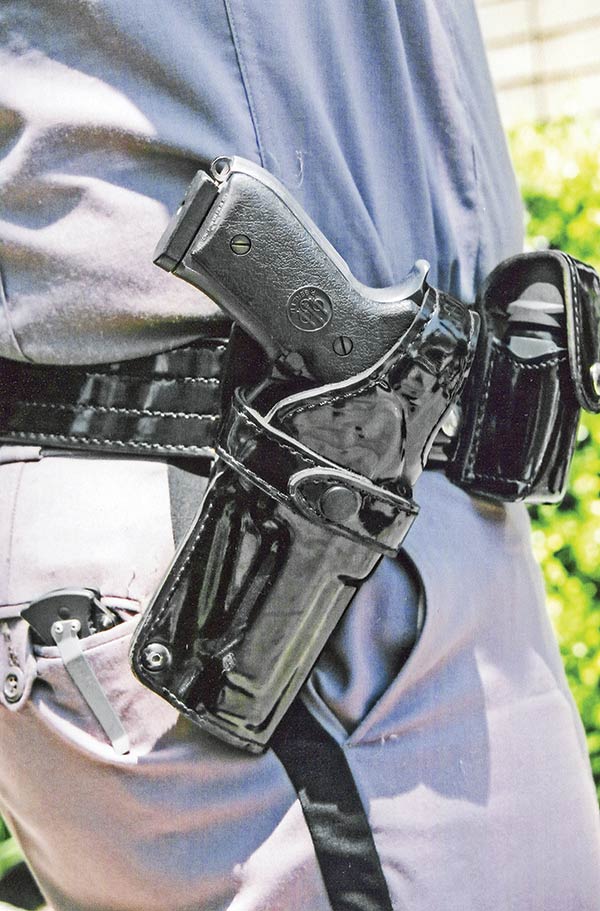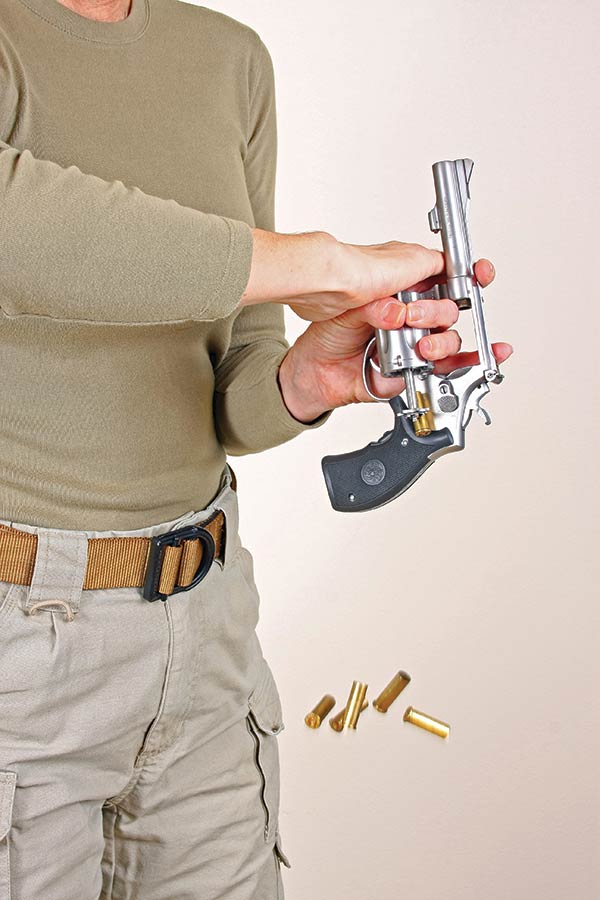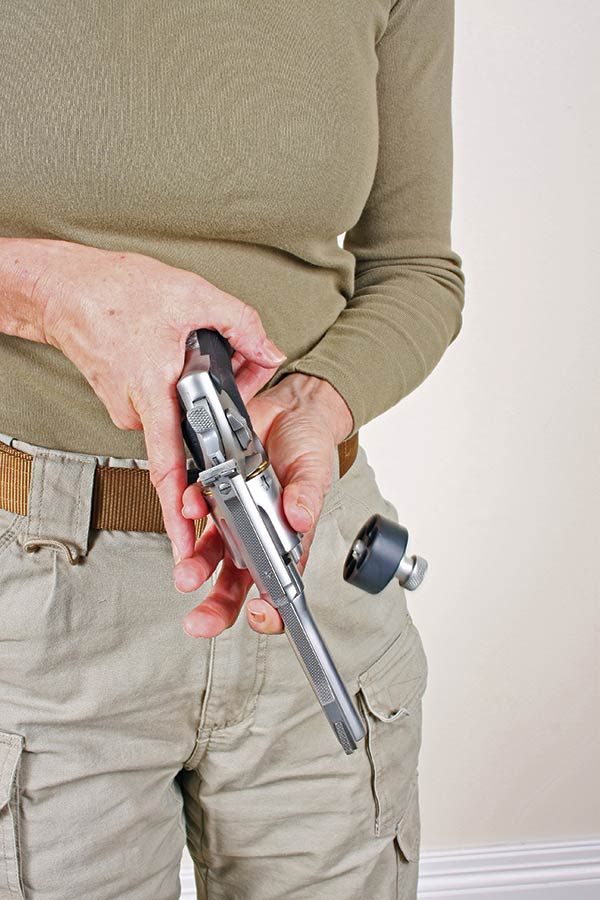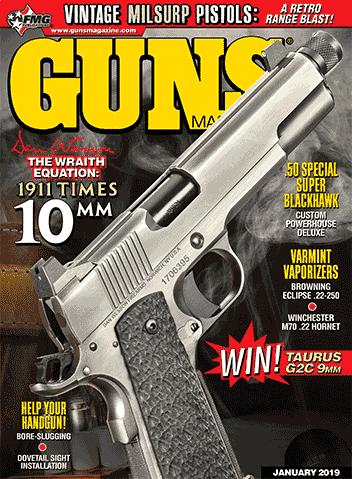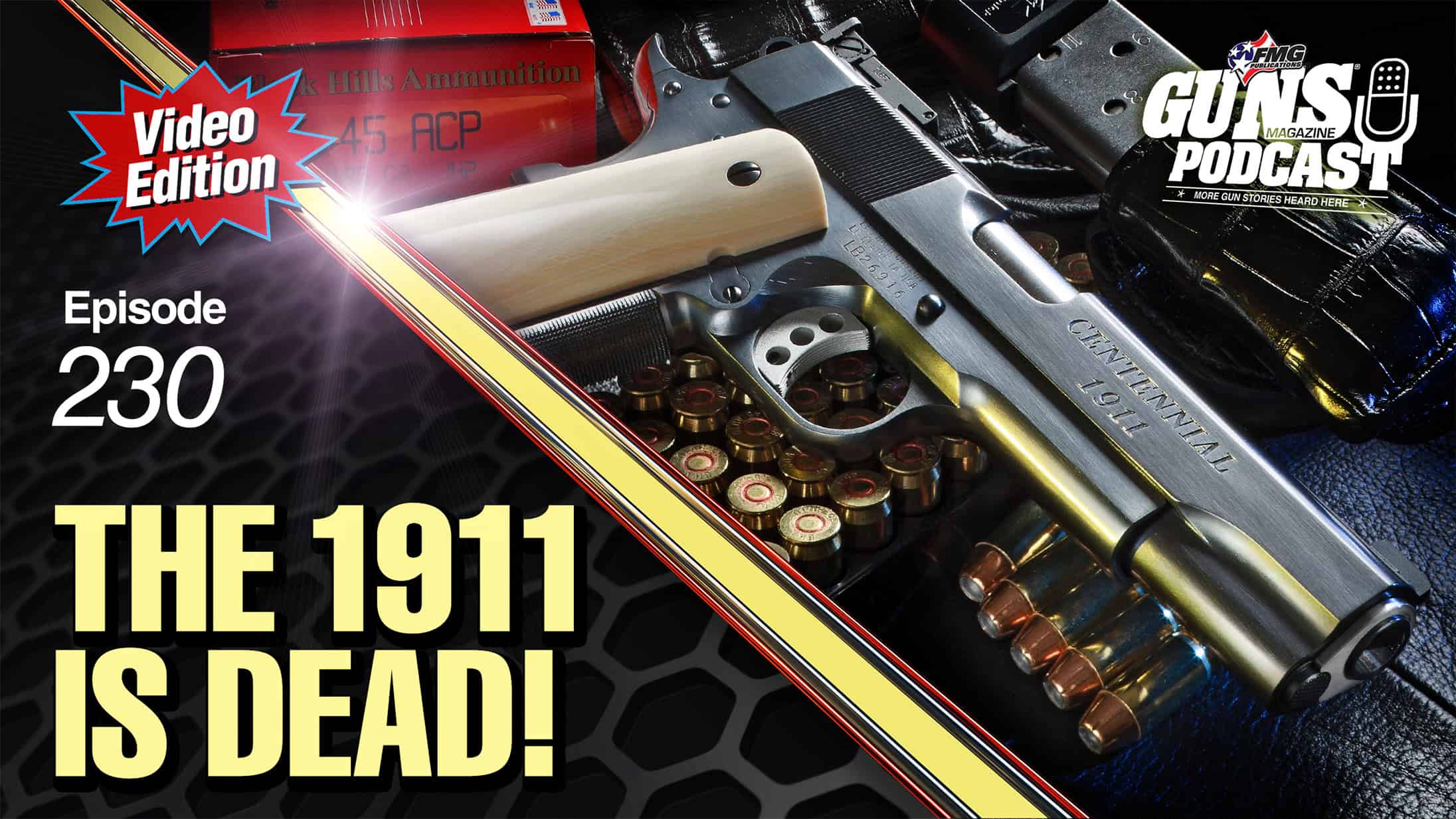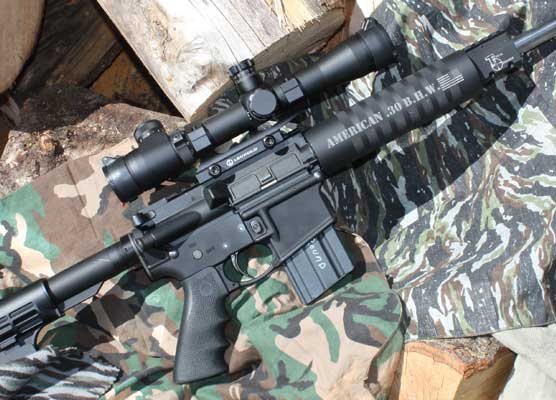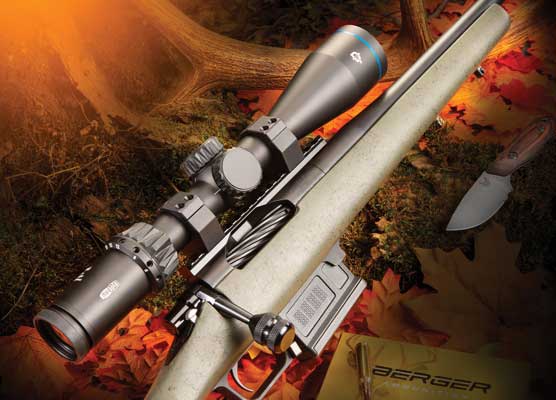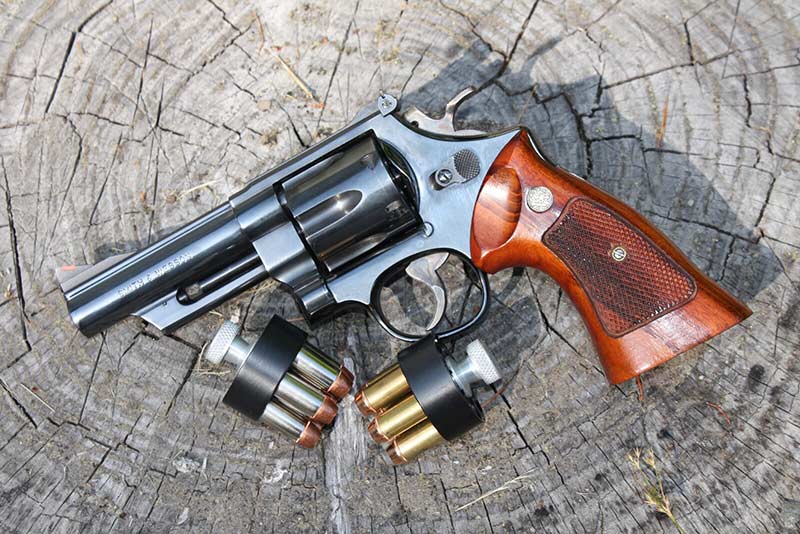Cops n’ Revolvers II
Maybe Something Was Lost In The Great Auto Transition
After telling you about my police academy introduction to revolver shooting back in the September issue, I’m going to tell you what our thoughts were packing a duty sixgun way back when …
Numbers Matter
The most obvious factor is round count. Carrying 6 rounds in your gun — along with two speedloaders, gave us a total of 18 rounds — roughly the same as one of today’s high-cap autos.
But I wonder if carrying fewer rounds made us better shots? Perhaps we were more selective shooters, compared to the “spray and pray” mentality of today’s “high-cap” copper, lugging 45-plus rounds? But I know I enjoyed having almost three times the ammo as in my old sixgun days.
One thing was certain, having only six rounds made you cognizant of how many times you fired, for fear of the dreaded “click” signaling an empty revolver. It’s something I’ve carried over — and still subconsciously do — whenever shooting a revolver.
Bullseye Background
The old timers loved telling the tale of how they were “taught” to shoot, “bullseye style” when rookies. Standing sideways at the firing line, shooting single-action, one-handed, arm extended, weak-hand stuffed in their pocket, stiff-backed still, breathing in deeply, dropping the hammer during their natural pause.
Mimicking the figure atop a “shooting trophy” may look cool, but it sure isn’t conducive for a cop in a shootout. Thank God training improved, but hey, that’s how it was …
Dumping Brass
We were told to pound the ejector rod “like you mean it” when dumping brass. “Let it hit the floor, don’t try to catch it!” was pounded into our heads. “What you do in training is what you do on the street, especially under stress!”
The old salts told stories of officer-involved shootings requiring reloads and the empty brass was missing from the scene. “Where’d it go? What’s going on here? Is this a coverup?”
No! The officers simply dumped their empties in their hand and pocketed them, because they were taught this way in the academy from anal range officers who didn’t want to police brass. You respond the way you train …
Front Break
We were issued Bianchi front-break holsters, with thumb-snap retention for our Ruger Service-Sixes when I was a rookie. While gripping your gun, your thumb would instinctively unsnap the holster as you rocked your gun forward to unholster it. The thinking back then was your gun would be snatched from your rear, which was virtually impossible to do with this design.
Grabbing from the front, however, was much too easy. This is how most cops got shot with their own guns. Again, our department responded appropriately, ordering us newly styled holsters, when we transitioned to 9mms.
Switching To Semi-Auto
In 1989 my Department transitioned to 9mm Berettas. Times were changing; the bad guys were carrying high-capacity semi-autos, so we needed to do the same, to match firepower, right?
Were we better off with 9mm semi-autos than our old wheelguns? If allowed to carry magnum ammunition instead of the issued .38 Special 158-gr. +P SWHP “FBI load” I’m sure a lot of savvy sixgunners would have happily carried .357-loaded revolvers. Around 1996 we transitioned to .40 S&W GLOCKs.
Changeover Jitters
By now, I’d been carrying a revolver in a front-break holster for four years … and was a little nervous about switching over to a new one. Remembering the rule “You respond to how you train” worried me about re-teaching myself how to draw with a different holster system, especially while under stress.
We went with a Level III-type holster, meaning there were three things entailed to getting your gun out. Rather than rocking it forward and releasing the thumb-break, we now pushed a release button with our middle finger while rocking the top hood forward as we rocked our pistols to the rear to draw. Talk about reeducating yourself! Holy Moly!
I give our training staff credit; we all had a 40-hour transitional training period involving several thousand rounds fired from a “draw and shoot” exercise to re-educate/rewire our central nervous system and muscle “memory” for those who’d carried sixguns for any length of time.
Every night I’d draw and holster 10 times before taking my Sam Brown belt off, reinforcing the new technique — after each shift — until I retired.
Sixgun Salute
Carrying, wearing and shooting revolvers stir many pleasant memories for me. They’re still my favorite handgun and a worthy choice for protection — not to mention enjoyment and relaxation. Sure I love the autos too, but deep down at heart, I’m a sixgun man through and through.

Get More Revolver Content Every Week!
Sign up for the Wheelgun Wednesday newsletter here:
